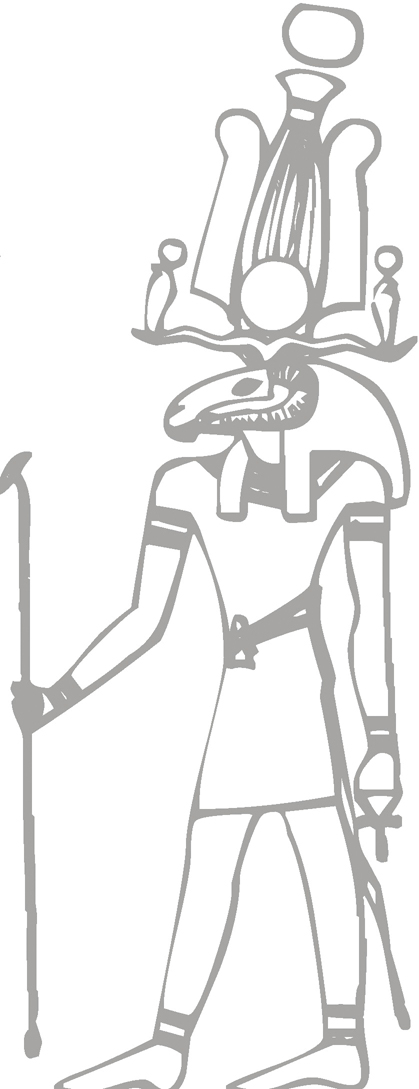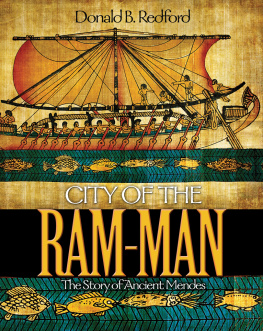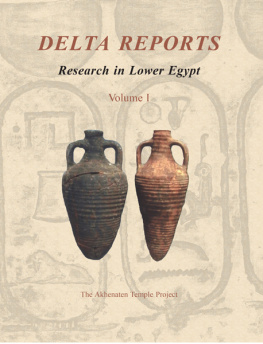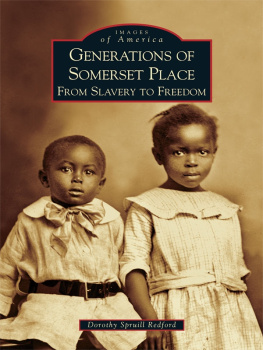Donald B. Redford - City of the Ram-Man
Here you can read online Donald B. Redford - City of the Ram-Man full text of the book (entire story) in english for free. Download pdf and epub, get meaning, cover and reviews about this ebook. year: 2021, publisher: Princeton University Press, genre: Romance novel. Description of the work, (preface) as well as reviews are available. Best literature library LitArk.com created for fans of good reading and offers a wide selection of genres:
Romance novel
Science fiction
Adventure
Detective
Science
History
Home and family
Prose
Art
Politics
Computer
Non-fiction
Religion
Business
Children
Humor
Choose a favorite category and find really read worthwhile books. Enjoy immersion in the world of imagination, feel the emotions of the characters or learn something new for yourself, make an fascinating discovery.
- Book:City of the Ram-Man
- Author:
- Publisher:Princeton University Press
- Genre:
- Year:2021
- Rating:5 / 5
- Favourites:Add to favourites
- Your mark:
- 100
- 1
- 2
- 3
- 4
- 5
City of the Ram-Man: summary, description and annotation
We offer to read an annotation, description, summary or preface (depends on what the author of the book "City of the Ram-Man" wrote himself). If you haven't found the necessary information about the book — write in the comments, we will try to find it.
City of the Ram-Man — read online for free the complete book (whole text) full work
Below is the text of the book, divided by pages. System saving the place of the last page read, allows you to conveniently read the book "City of the Ram-Man" online for free, without having to search again every time where you left off. Put a bookmark, and you can go to the page where you finished reading at any time.
Font size:
Interval:
Bookmark:

City of the Ram-Man

Figure 0.1. Map of Egypt.
City of the
Ram-Man
THE STORY OF
ANCIENT MENDES

Donald B. Redford
Princeton University Press
Princeton and Oxford
Copyright 2010 by Princeton University Press
Published by Princeton University Press, 41 William Street, Princeton, New Jersey 08540
In the United Kingdom: Princeton University Press, 6 Oxford Street, Woodstock, Oxfordshire OX20 1TW
All Rights Reserved
Library of Congress Cataloging-in-Publication Data
Redford, Donald B.
City of the Ram-man : the story of ancient Mendes / Donald B. Redford.
p. cm.
Includes bibliographical references and index.
ISBN 978-0-691-14226-5 (hardcover : alk. paper)
1. Mendes (Extinct city)History. 2. Mendes (Extinct city)Religious life and customs. 3. RamsSymbolic aspectsEgyptMendes (Extinct city) 4. Mythology, EgyptianEgyptMendes (Extinct city) 5. Mendes (Extinct city)Antiquities. 6. Excavations (Archaeology)EgyptMendes (Extinct city) 7. EgyptHistoryTo 332 B.C. I. Title.
DT73.M54R43 2010
932dc22 2009021605
British Library Cataloging-in-Publication Data is available
press.princeton.edu
eISBN: 978-1-400-83455-6
R0
Illustrations
Sidebars
Preface
The present work is an attempt to set on record in readable form the interpreted results of a century and a half of investigation of the site of Tel er-Ruba/Mendes. Until the early 1960s these investigations involved the desultory visits and/ or treasure-hunting of individuals whose names would best be forgotten. Only beginning in 1963 was formal excavation undertaken, first by New York University (196380) and then by a consortium made up of a team from the University of Washington, the University of Illinois, and the Pennsylvania State University (1990 to the present). The work is by no means finished and, judging from the results so far, it is altogether likely that discoveries, some of a sensational nature, will be made in the future. What has already been found, however, has cast such a flood of light on the history of Egypt and the eastern Mediterranean that it is high time to set it forth for the predilection of layman, student, and scholar.
Many people placed me in their debt in the writing and production of this book. Of these the late Bernard Bothmer and Professor Herman de Meulenaere must be mentioned first. They both encouraged me from the first expression of interest I divulged in the site. Equal encouragement and offers of help came from two close friends, Christine Liliquist and Richard Fazzini, both of whom had accompanied the New York University expedition under Donald Hansen in the 1960s. With colleagues Robert Wenke and Douglas Brewer we enjoyed close collaboration in the early seasons, and one hopes their work is not completed. Without the Supreme Council of Antiquities of Egypt the expedition could have neither started nor sustained itself, and thanks are due the chairman, Dr. Zahi Hawass, Mansura director Naguib Nour, and Chief Inspector Salim el-Boghdadi. Over the years we have been privileged to play host to a number of distinguished visitors, including Ambassador Michael Bell of Canada, Manfred Bietak of the Austrian mission to Tell edDaba, Gregory Mumford and his team to Tell Tebilla, and Terry Waltz of the American Research Center in Egypt, to name but a few. All were generous with comments and useful advice. Last but not least, the indefatigable field staff is to be acknowledged as perhaps the key element in turning the Mendes expedition into an unqualified success.
The following contributed directly to the present volume: Keith Meikle, Susan Redford (plans), Tracy Butler, Patrick Carstens, Sandy Nesbitt, David George (photographs), Rupert Nesbitt, Troy Sagrillo, Heather Evans, and Stephanie Palumbo (artwork). Isometric renderings were done by the author, and Kyle Long edited the manuscript. Unless otherwise stated, the translations of Egyptian texts are those of the author.
The notes and suggested readings gathered at the end of the book are not intended to be exhaustive but to provide a sort of Einleitung for the interested reader. Colleagues may well detect gaps they think ought to have been filled. The author tenders his regrets.
Introduction
Anyone who has not visited Mendes cannot appreciate the wonder of approaching from the south or west and seeing the vast, low mound arise on the horizon out of the flat Delta landscape. Before 1900 a visit often took on an eerie aspect in that, because of the proximity of the flat Daqahlieh plain, the approach was often of necessity by boat. Even today, when the fields are flooded for the rice planting, Mendes again becomes an island, and it takes little imagination to visualize the marshes of old.
Yet, for those visiting the site in July or August, another unexpected experience awaits. Arising at dawn the traveler finds him- or herself engulfed in thick fog. Heavy moisture drips like rain from indistinct tree shapes, mere silhouettes in the mist. Donkeys and humans go haltingly, unsure of the terrain, swallowed up as they perceive themselves to be in a mantle of grey darkness. All things, even those which are normally comfortingly familiar, are completely hidden from the gaze of animal or man. And the fog is everywhere; it never ends, it is infinite. Worst of all, perhaps, one cannot help but go astray, for sense of direction is stifled: the fog is directionless. And always there is the croaking of frogs! Only when the sun mounts high in the sky does this mantle of unknowing begin to draw back: gradually the mists retreat before the heat, and the ordered world begins to appear. Such is the daily act of creation during the summer at Mendes.
Modern times have come to Tel er-Ruba and its environs, but the site and its satellite villages still lie off the beaten track. Reflections of an agricultural past are seen from time to time. Fishermen abound on the banks of local canals, and the schilby-fish, misrepresented as a dolphin, lives in garden statuary. On our first visit to Mendes our progress on the last kilometer was impeded because of a strange procession in the dust of an August afternoon: a seemingly endless flock of well-fed sheep, led by an enormous ram, was shuffling slowly westward along the road.
The city whose ruins one sees today owes its size and general configuration to the activity of a relatively late period, from approximately 540 to 350 B.C., and would have differed markedly from the New or Old Kingdom settlement. Although excavation has not yet tapped prehistoric levels of the fourth millennium B.C., it is highly likely that the shape of the first habitation differed yet again, and in many respects, from what was to follow in the 1st Dynasty. Coring has suggested that the earliest occupation was a modest affair, established on levees left by the meandering Mendesian branch of the Nile. The evidence of toponymy makes it tempting to identify a substantial segment of the earliest population with a West Semiticspeaking element, with demographic ties northeastward along the Levantine coast. It is one of these groups that the imagines trekking into the Nile Delta in the late fourth millennium B.C. and settling on the site that was to become Mendes. To enhance verisimilitude and depict a culture on the threshold of its historic evolution, the conceit of translating familiar place-names rather than transliterating them has been adopted in the early chapters.
Font size:
Interval:
Bookmark:
Similar books «City of the Ram-Man»
Look at similar books to City of the Ram-Man. We have selected literature similar in name and meaning in the hope of providing readers with more options to find new, interesting, not yet read works.
Discussion, reviews of the book City of the Ram-Man and just readers' own opinions. Leave your comments, write what you think about the work, its meaning or the main characters. Specify what exactly you liked and what you didn't like, and why you think so.








